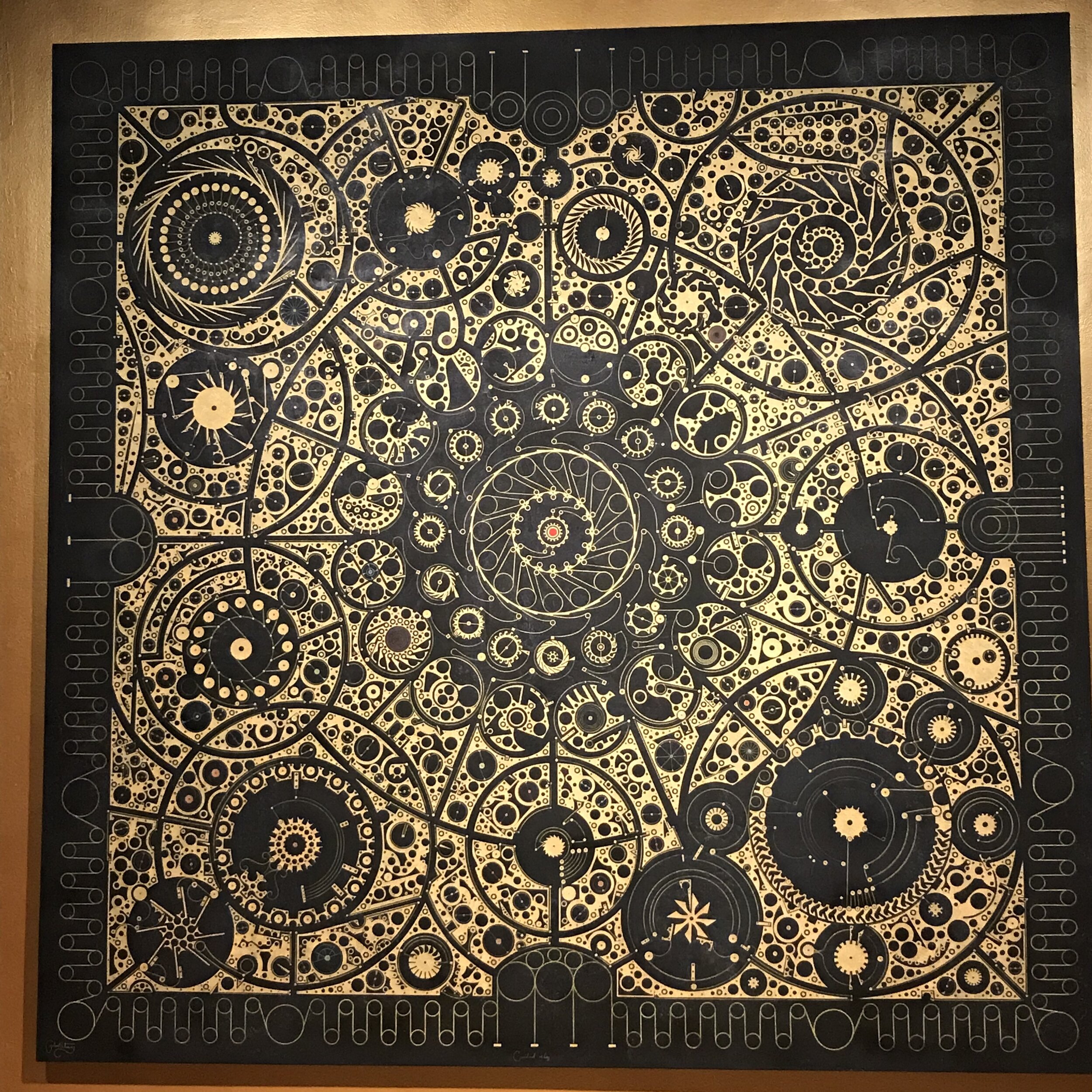I was able to go to six different art museums in the Miami area this past week, allowing me to take in a lot of amazing art created around multiple themes. There was a entire exhibit about happiness at the NSU Art, in Fort Lauderdale. There was a great deal of incredible contemporary art by Caribbean artists at the Pérez Art Museum in Miami. At the Wolfsonian, on Miami Beach, there was an exhibit of very odd propaganda in the style of Art Deco. I was, as usual, in awe of all I saw and learned about, but several pieces really stood out. I was curious to step back and ask myself “Why am I so drawn to these particular pieces?”
Elliot Hundley “the other side of the house” Detail image.
The first piece that took my breath away was “Precarious” by Cecilia Vicuña at the The Museum of Contemporary Art, North Miami. Vicuña had spent years collecting various bits of debris that had washed up on the shore to make these delicate, yet powerful, collection of sculptures. Another piece that captured my attention was the “the other side of the house”, by Elliott Hundley which was a leaning tower of mixed media with layers of texture, at the Pérez Art Museum.
A major uniting factor in these pieces was that each of them looked like they took a lot of time to create. I thought, for a while, that was what I was drawn to. Many people admire art that looks time-consuming, yet art that takes a lot of time to create isn’t always the best indicator of quality. Artists do get tired of being asked “How long did this take?“ I feel that the exact measurement of the time it took to create a specific piece doesn’t take into account the planning, thinking, training, practice, missteps and preparation it took me to get to the point of just starting a new piece of art.
After further pondering I wondered if it’s the obvious obsession that goes into the work that I admire and relate to in these pieces. I get obsessed just looking at them. They make me want to live vicariously through those artists. Which is crazy because I live that life already, compulsively creating nearly every day of my life. Or maybe it’s that they are using different materials, like different flavors, so that I can partly taste that substance which feeds my own mania, inspiring new shapes or compositions in my own work.
Leonardo Drew’s “Number 163” 2012
I definitely felt obsessed when I saw/took in/experienced/devoured Leonardo Drew’s piece at the Perez. It’s a huge wood construction (about 25 feet by 20 feet) with hundreds of large, random pieces of wood cantilevered at the top, aged and distressed by hand and pieced together in a repetitive, yet varied, compositional grid. Drew even admits that he is a “crack addict of art”.
Liu Shiyuan’s “As Simple as Clay” 2013
I felt equally obsessed when I took in the large installation of found photos by Liu Shiyuan at the Patricia and Phillip Frost Art Museum. Her approach to art making is fascinating because it mostly involves searching the internet for photos. Doing this type of work has a strange appeal to me because of the infinite expanse of the images to be discovered on the web. Understanding her process added to the impact of the message her work held for me, allowing me to imagine what it would be like to create this way. It definitely gave me a new view of the Internet as a vast pallet, used by at least one artist to make her art.
Carlos Estevez,
I was thrilled to see a whole gallery of Carlos Estevez’s large-scale paintings at the Lowe Art Museum. I had just discovered one of his pieces the day before at the Pérez and fell in love with his way of making patterns that have beautiful variation. My favorite piece was all about time, which brings me back to my thought that humans are just drawn to art that looks like it takes a lot of time. Most people are aware that it takes a lot of patience to make these involved pieces. But really, maybe the art we like best is the art that shows the all-in-all engulfing obsessive love of creating.
Close up of “Swirly Bird Teapot” by Layl McDill




